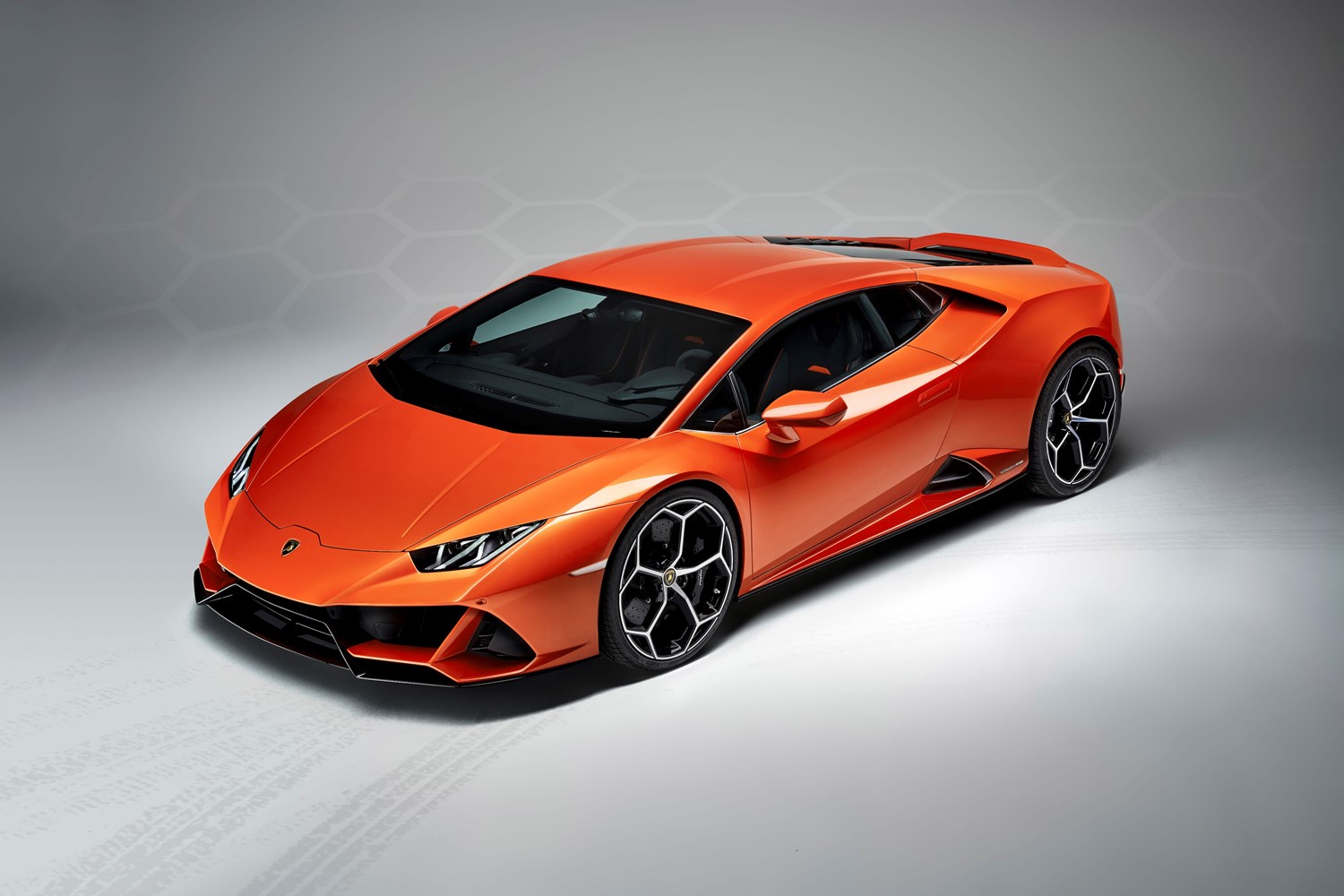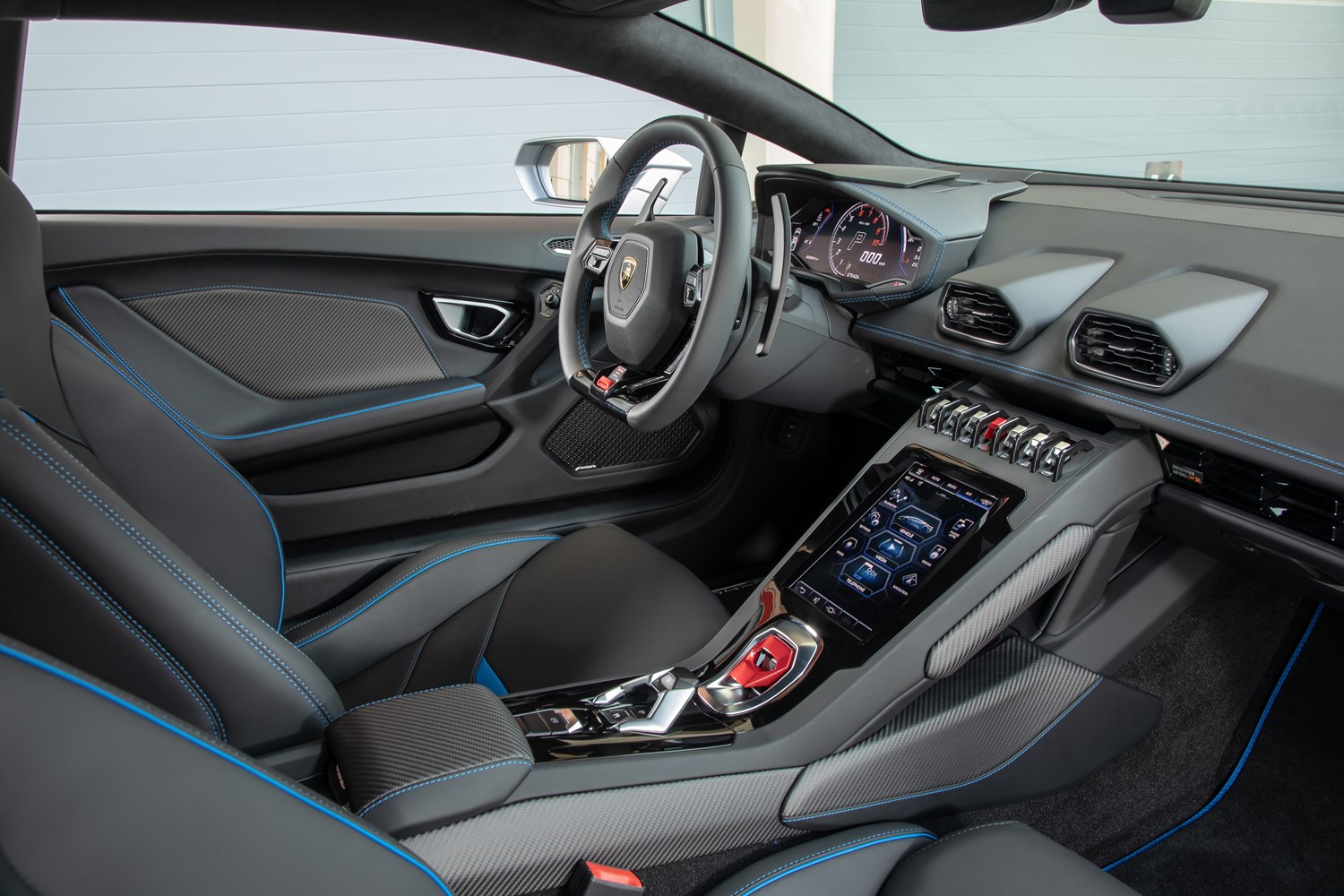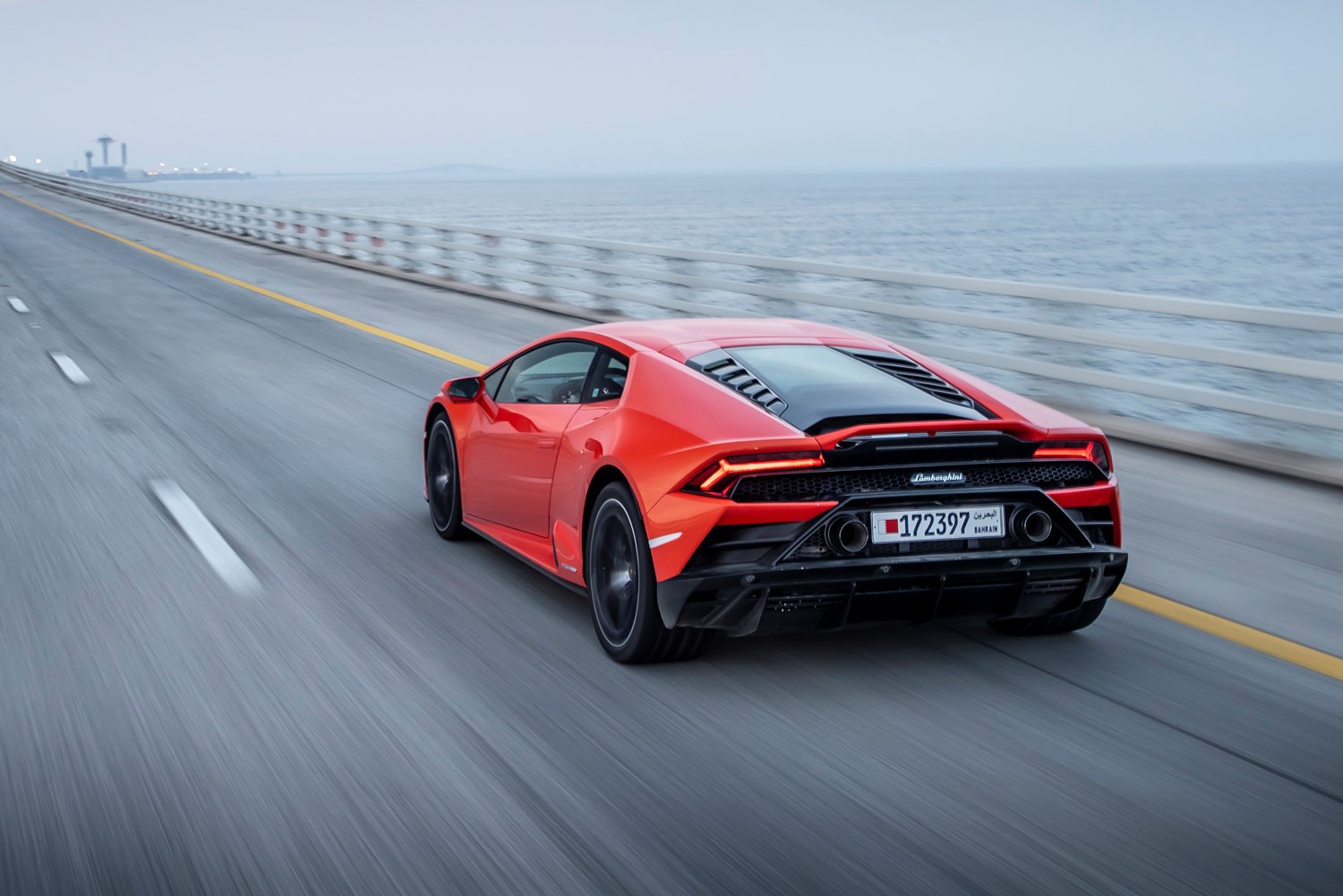Model review
What do you expect from Lamborghini? A wild-looking and flamboyant supercar? If so, the brand’s Huracan should fit the bill nicely. Despite being the Italian firm’s ‘baby’ model – sitting beneath the Aventador in the range – it’s proven to be every bit a real Lamborghini.
Arriving on sale in 2014 as a replacement for the Gallardo, it’s named after the Spanish for ‘hurricane’ and continues with a shared Audi V10 engine like its predecessor. Originally known as the LP610-4 – ‘LP’ signalling it’s mid-engined, ‘610’ its horsepower and ‘4’ the fact it’s four-wheel-drive – it proved to be a far more upmarket and modern offering than the car it replaced.
The ‘Spyder’ convertible model followed in 2016, at a similar time to a slightly more affordable version known as the LP580-2. The key difference here is that it’s rear-wheel-drive, while also getting a few light design tweaks to set it apart from the regular Huracan. A more extreme Performante model was also sold between 2017 and 2019, offering additional power, a range of carbon accents and a large rear spoiler, along with a range of other performance tweaks.
Latest model
Come 2019 it was time for the Huracan to have a facelift, with Lamborghini renaming it as the ‘Evo’. It actually features the same more powerful engine as the previous Performante model, and can be spotted by its redesigned front end with new integrated air inlets and a revised rear – both of which help to give it a more extreme look. A rear-wheel-drive version would also follow in 2020, simply known as the ‘Evo RWD’.
The latest incarnation of the Huracan came in 2021 with the STO – essentially a track-focused road model based on the brand’s Super Trofeo Evo race car. Though power remains the same as the regular Huracan, the STO is 43kg lighter than the standard car, thanks to the removal of all-wheel-drive and wider use of carbon fibre to really give the model both the look of a race car but also the drive of one.
Value for money
A Huracan is unlikely to be bought for its value for money, and it’s safe to say this is no bargain. Prices here start at £137,000 for the RWD, £165,256 for the standard coupe and £181,781 for the Spyder. These figures are excluding UK tax, so you can add another significant chunk to the price once these have been paid. However, you do have to consider the performance and sheer presence of the Huracan when looking at these figures. On the flip side, it’s also considerably cheaper than the brand’s Aventador.
At the time of writing, the cheapest used Huracan (including taxes paid), started at around £120,000, which buys a well-specced 2014 car with around 20,000 miles on the clock. You’ll have to spend another £30,000 on top of that to buy a Spyder, though it was another few years before they were introduced. For newer Evo models, you’ll have to spend close to £200,000 to get one.
Looks and image
Few cars can turn heads quite like Lamborghinis, and the Huracan is certainly no exception. With truly wild styling from its angular front end, it has street presence like few other cars can manage. Even in more sedate colours it’s much the same, though if you want something truly bold choose a colour like purple, orange or yellow for your Huracan.
It’s similarly wild on the Huracan’s interior, with Lamborghini having free reign to make the cabin as unique as it likes. Highlights include a starter button revealed under a fighter jet-like switch, while similarly to a Ferrari, a range of buttons are found on the steering wheel, including both the wipers and indicators. There’s also plenty of leather, Alcantara and carbon used throughout the interior, while digital dials and an 8.4-inch touchscreen help to give it a more modern feel.
Undoubtedly the star of the show in the Huracan is its engine. Though we’ll explore it in detail later, it’s incredibly characterful, while a titanium exhaust system really helps to amplify the Huracan’s beastly powerplant. The latest ‘Evo’ model turned up the thrills, adding features like rear-wheel steering (only available in four-wheel-drive cars) to really add to the sense of agility. Though perhaps not as dynamic as the class best, few supercars can get close to it when it comes to outright thrills.
Space and practicality
Practicality is likely one of the lowest priorities if you’re looking at a Huracan, though it is far better than many of the brand’s past models. Even taller adults should be able to sit in the car with relative ease, though the seats are quite firm.
With the Huracan being mid-rear engined, there’s no boot in the back, but rather at the front under the bonnet. It’s more of a cubby hole than a traditional boot, though offers room for a few shopping bags and luggage for a weekend away.
Engines
The Huracan is one of the last non-turbocharged engines available in the performance segment, and instead uses a naturally-aspirated 5.2-litre V10. Initially, the model made 602bhp – and still does so on new rear-wheel-drive versions – but on the limited-run Performante and later Evo cars, that figure has increased to 631bhp.
It’s unsurprisingly rapid, with it able to get the Huracan to 0-60mph in around three seconds, while flat out the top speed will exceed 200mph. It really is a force to be reckoned with, and makes you wonder why you’d ever splash out more for the flagship Lamborghini Aventador.
Running costs
Stupidly high running costs are part and parcel with just about any supercar, and the Huracan will be absolutely no exception. Lamborghini claims around 20mpg, though a large 80-litre fuel tank could give a theoretical range of around 400 miles on a long run, should you want to. The CO2 emissions of 332g/km are also up there with some of the highest of any car on sale today.
You’ll be forking out plenty in insurance, too, though road tax perhaps isn’t quite such a headache. You’ll pay £475 in annual tax when the car is two to six years old, though after that it defaults to £150 per year.
Things to look out for
Given the Huracan is sold in quite limited numbers, not a huge deal is known about its reliability. However, it is considered to be one of the more dependable supercars of this ilk. Regardless, if buying a used example, make sure it has been impeccably maintained on a regular basis (regardless of mileage) and we’d advise having a car inspected before signing on the dotted line. You really don’t want to be buying a bad example with a car like this.
Rivals
The supercar market remains as toughly fought as ever, with key rivals facing the Huracan including the Ferrari 488 GTB and F8 Tributo, along with the Porsche 911 Turbo and McLaren 570S and GT. You could also take a look at the mechanically-similar Audi R8 V10 or a Jaguar F-Type SVR if you fancy something a bit more affordable.
Depreciation
Though some supercars are able to hold onto their value pretty well, the Huracan is one that errs more on the side of depreciation. Depending on how flamboyant you are with your options, there’s the scope to lose a significant amount, but if you buy a used example cleverly and look after it well, it should hold onto its value relatively well.




